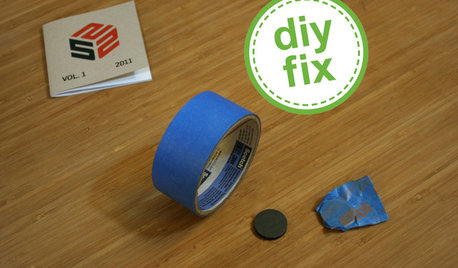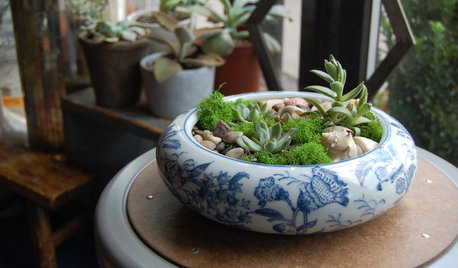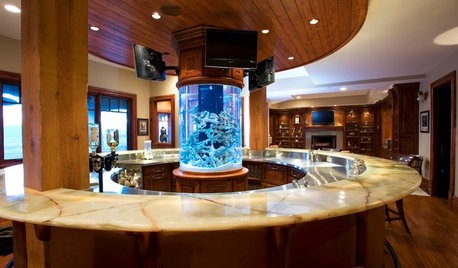Why do fish die so quickly?
reg_pnw7
16 years ago
Related Stories

CONTAINER GARDENS3 Steps to Creating Quick, Easy and Colorful Succulent Containers
Take a bright container, add a colorful succulent or two and have a professional, summery design in minutes
Full Story
GARDENING AND LANDSCAPINGHow to Make a Pond
You can make an outdoor fish paradise of your own, for less than you might think. But you'll need this expert design wisdom
Full Story
KITCHEN DESIGN15 Quick Kitchen Fixes
Little Changes Will Help You Love Your Kitchen All Over Again
Full Story
GARDENING GUIDESGreat Design Plant: Bugle Weed, a Quick Ground Cover
It’s highly adaptable, suppresses weeds, reduces erosion and provide weeks of bright flowers. Just watch for invasiveness
Full Story
GARDENING FOR BUTTERFLIESA Quick-Start Guide to Bird-Watching for Fun and Learning
Set out some seed and grab your field guide. Bird-watching is an easy, entertaining and educational activity for the whole family
Full Story
LIVING ROOMSRoom of the Day: Curiosities Bring Quick Intrigue to a Living Room
From blank box to captivating, exotic concoction, this room goes for the wow factor — and the whole house took just 4 days
Full Story
DECORATING GUIDESQuick Fix: Find Wall Studs Without an Expensive Stud Finder
See how to find hidden wall studs with this ridiculously easy trick
Full Story
DIY PROJECTSQuick DIY Project: 3 Ways to Show Off Your Succulents
Create a simple yet lush vignette with a few plants and some everyday items
Full Story
PETSSo You're Thinking About Getting a Dog
Prepare yourself for the realities of training, cost and the impact that lovable pooch might have on your house
Full Story
DECORATING GUIDESDesigning Nemo: 30 Fish Tanks Make a Decorative Splash
Bring an otherworldly glow and a calming vibe to your home with the living art of an aquarium
Full Story





woeisme
james_ny
Related Professionals
Brentwood Landscape Architects & Landscape Designers · Costa Mesa Landscape Contractors · Edwardsville Landscape Contractors · Hannibal Landscape Contractors · Hicksville Landscape Contractors · Long Beach Landscape Contractors · Weslaco Landscape Contractors · Yukon Landscape Contractors · Ansonia Landscape Contractors · Austin Decks, Patios & Outdoor Enclosures · Baker Decks, Patios & Outdoor Enclosures · Green Bay Decks, Patios & Outdoor Enclosures · Lansdale Decks, Patios & Outdoor Enclosures · Larkspur Decks, Patios & Outdoor Enclosures · Minneapolis Decks, Patios & Outdoor Enclosuresreg_pnw7Original Author
james_ny
woeisme
sherryazure
reg_pnw7Original Author
lolafish
birdwidow
petiolaris
birdwidow
paparoseman
petiolaris
rascy
reg_pnw7Original Author
yardfulofbirds
jessi323
mingtea